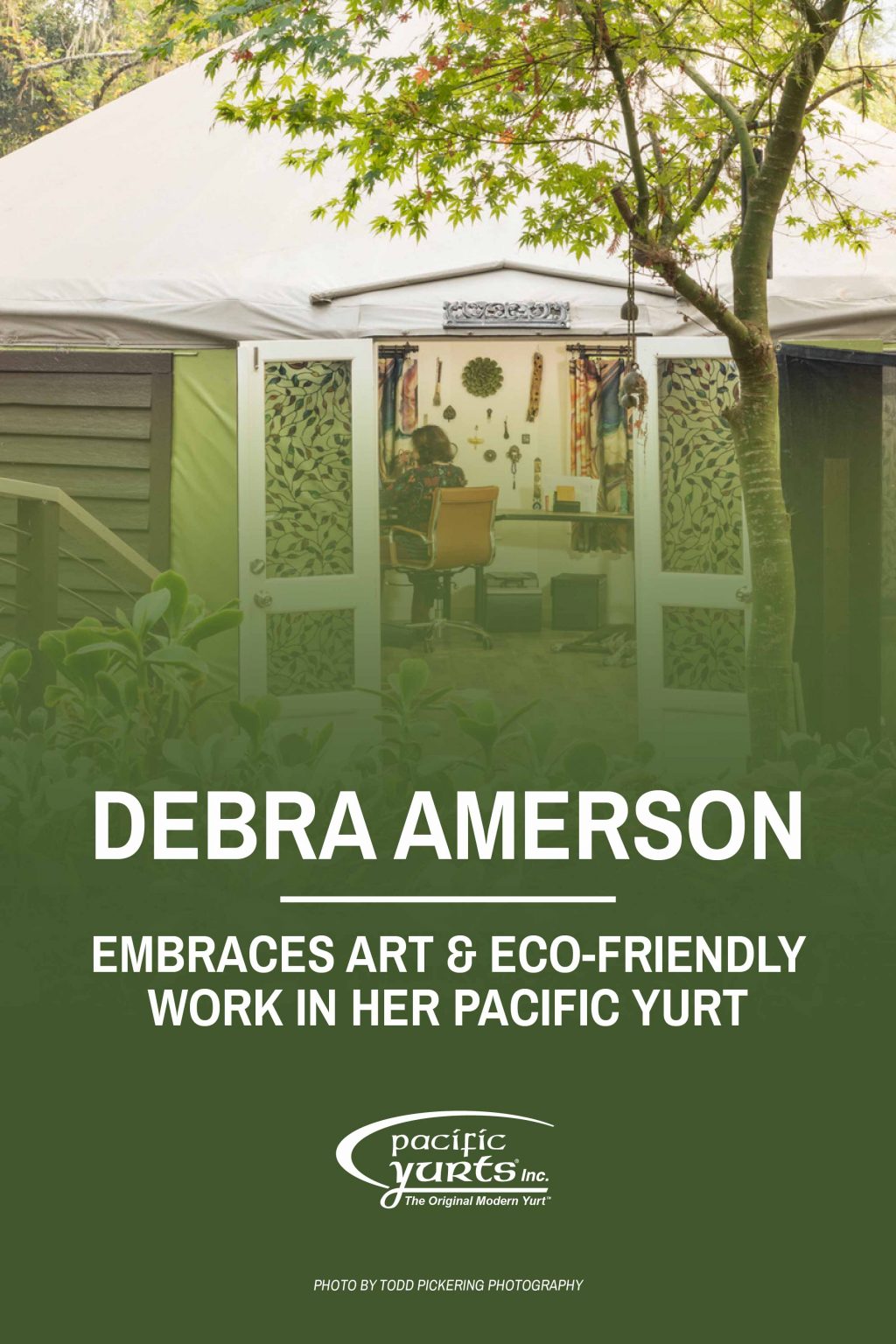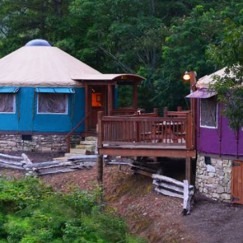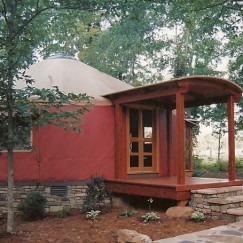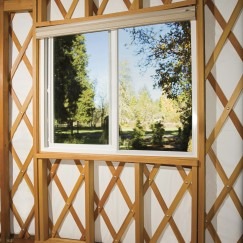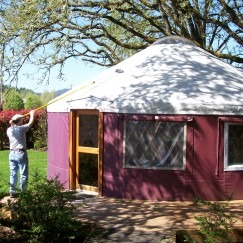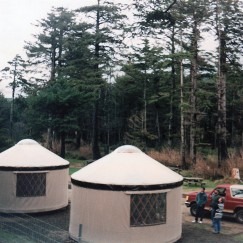Customer Spotlight: Debra Amerson Embraces Art & Eco-Friendly Work in Her Pacific Yurt
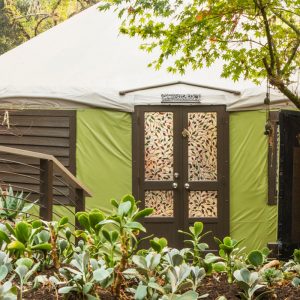
Debra Amerson purchased her yurt in 1999. She transformed the space into a personalized home office and art studio. “It’s worked beautifully for me,” Amerson said when she described her use of the yurt space. Her business, a sustainable art, interior, and plantscape design firm called Deeper Green Interiors, is committed to eco-friendly operations, which is what drove Amerson to contact Peter Dolan at Pacific Yurts. Since Amerson had owned her yurt for 21 years, some repairs and replacements were necessary. She wanted solutions that were both long-lasting and environmentally friendly. Pacific Yurts was able to help. For years, Amerson has enjoyed her yurt as well as introduced others to the benefits of owning yurts and working with Pacific Yurts.
The Inspiration to Build a Pacific Yurt
In the early 90s, Amerson visited Esalen Institute in Big Sur where she received a massage inside a massive and cozy yurt. She enjoyed the structure and the possibility to make the space something unique to her interests. Here sparked the idea of building a personal yurt as an art studio and office.
Yurts can be challenging to install, Amerson admits, as there are several factors to take into consideration. The amount of sun exposure, wind, rain, elevation, overhanging tree branches, among other facets, must be considered when choosing a location. However, Amerson will also be the first to describe the charm of yurts. She describes the perks of working in a yurt in any season: “The raindrops on the roof are actually quite charming and I like working inside my yurt with the wood stove keeping me cozy during the winter rains in NorCal.”
The Advantage of Owning a Pacific Yurt
Having a home office can be tricky, which is why yurts provide the perfect solution for an office or studio space. Amerson’s 24’ yurt is the perfect size for her workspace. Plus, during the pandemic, her yurt has provided relief as an additional space to work and spend time in apart from her home. For Amerson, owning a yurt means having a space of her own dedicated to her creativity, allowing her to focus and develop her craft to fully immerse herself in her art and work. The beauty of owning a yurt is this kind of versatility. Owners can turn their yurt into any kind of space they desire. However, Amerson cautions that yurt living is not a given in every state and county. To avoid disappointment, find out if your county deems it legal to live in a yurt full-time.
The Future of Eco-Friendly Living in Pacific Yurts
Yurts can easily be constructed to be eco-friendly, which was a huge plus for Amerson, who operates a certified green business in Marin County, California. Typical yurt walls and roofs last 13 to 15 years, but Amerson didn’t want to throw away the canvas siding and PVC roof materials when the time came to replace it. Instead, Pacific Yurts introduced Amerson to elastomeric paint, which is a thick rubber-based paint that expands and contracts with temperature fluctuations and is resistant to all kinds of weather. This has allowed her to keep her yurt’s original walls and roof functioning without needing to dispose of the materials.

In the years since Amerson first purchased her yurt, she has coated the interior walls and beams with non-toxic zero VOC paints, installed laminate wood flooring, and added additional structural beams under the base to support new large glass windows. Her crew created a large storage closet enclosed with galvanized metal, and Amerson decorated the interior with existing office furniture upgraded with extra wood flooring as decorative cladding. Through all the structural and design projects, Pacific Yurts has, when asked, provided the necessary support to make for a smooth and easy process.
Amerson believes that yurts could be the future of eco-friendly living and working. Yurts can be built sustainably, last a long time, and have a minimal footprint on the planet.
Advice for Prospective Pacific Yurt Owners
Looking to embark on life in the round? Before deciding if a yurt is right for you, make sure you ask Pacific Yurts and your county building department a lot of questions, Amerson notes. You’ll need to consider how you plan to use the space, the location, and the features you’re interested in prior to ordering a new yurt. Pacific Yurts continues to offer valuable, environmentally friendly alternatives for Amerson’s older yurt, allowing it to not only function beyond the typical lifespan, but to thrive!
Like any long-lasting structure, a yurt requires occasional maintenance. Over the years Amerson has needed to repaint the interior and exterior of her yurt, replace pieces of the structure, and fix holes from fallen tree branches that poked through the ceiling during storms. She recalls one wind storm that dropped a tree branch on her yurt and snapped an interior roof beam. She contacted Pacific Yurts who sent a replacement piece promptly.
Amerson stresses the importance of having a good crew to build and install a yurt. Ideally, someone “well-versed in yurt installation.” In regards to Pacific Yurts, Amerson said, “Pacific Yurts provides excellent install specs and are helpful during the installation process.”
If you’re interested in asking questions or taking the next steps to install your personal yurt, contact us for more information.
Want to see more Pacific Yurts?
Visit us on Pinterest!
